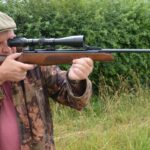I was sitting at the shooting bench in Lander, Wyo., to check my rifle’s zero before the next morning’s hunt. I was there for the One Shot Antelope Hunt—a prestigious event with a dignified provenance—with teammates Larry Weishuhn and Chris Sells (of HeymUSA) when Chris and I began comparing notes. He was shooting the Heym SR30 in 7mm Remington Magnum, while I had the Savage Impulse Mountain Hunter in Hornady’s new 7mm PRC, so the inevitable comparisons were made in short order. Our conversation convinced me this would make a good topic for our “Head to Head” series, as the 7mm bore diameter is one of the most popular all-around choices for North American hunting, and the magnum cartridges are surely a favorite as well.
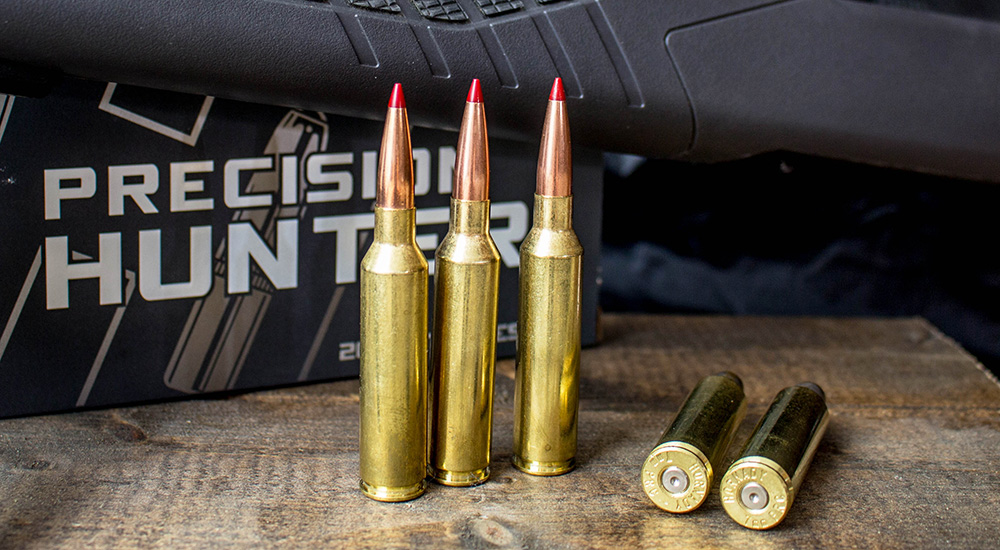
One is a newbie, and one ranks among the most popular hunting cartridges sold to this day, but both have appreciable characteristics. Both have the ability to launch even the heaviest 7mm bullets at very respectable velocities, and both are perfectly suited to take the vast majority of the world’s game animals, save the biggest and most dangerous species.
Starting with the older design, the 7mm Remington Magnum reared its head in 1962, and quickly gained a foothold among the hunting community. Following the concept of the shortened Holland & Holland belted case, the 7mm Remington Magnum was designed to fit in a standard long-action receiver, and bears a strong resemblance to the .275 H&H Magnum which preceded it by a half-century, albeit at higher velocities. Following the successes of Winchester’s .264 Magnum, .338 Magnum and .458 Magnum released in the latter-half of the 1950s, Remington’s 7mm cartridge showed the major shortcoming of the .264 Winchester Magnum: bullet weight.
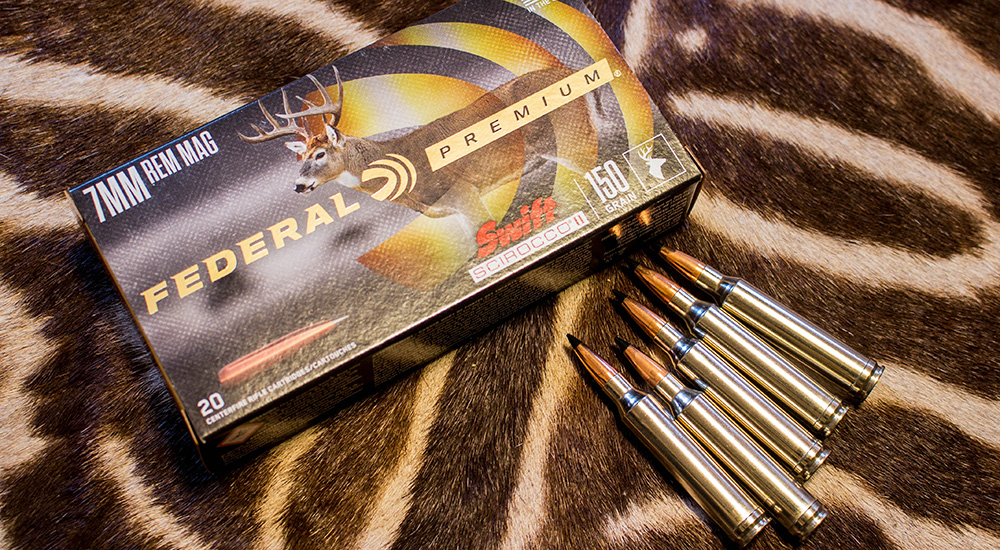
Shortening the H&H case to a length of 2.500 inches, and using a 25-degree shoulder, the 7mm Remington Magnum has an overall cartridge length of 3.290 inches. Though it is designed to headspace off the belt of brass, handloaders can improve concentricity by using the shoulder for headspacing. Driving a 140-grain bullet to a velocity of 3150 fps, and the heavy 175-grain bullet to 2800 to 2850 fps, the 7mm Remington Magnum offers a wide selection of bullet types and weights, all at recoil levels which are tolerable for a magnum cartridge in a standard-weight rifle.
There are those who feel the 7mm Rem. is a bit overbore, and that the bore diameter is better served by the .280 Remington case, or perhaps the .280 Ackley Improved variant, but there are also thousands of hunters who sling a 7mm Rem. Mag. rifle over their shoulder each season and get to work. It can be a wonderfully accurate cartridge, often delivering sub-MOA groups, and the energy figures generated by the cartridge make it suitable to almost all game on the North American continent.
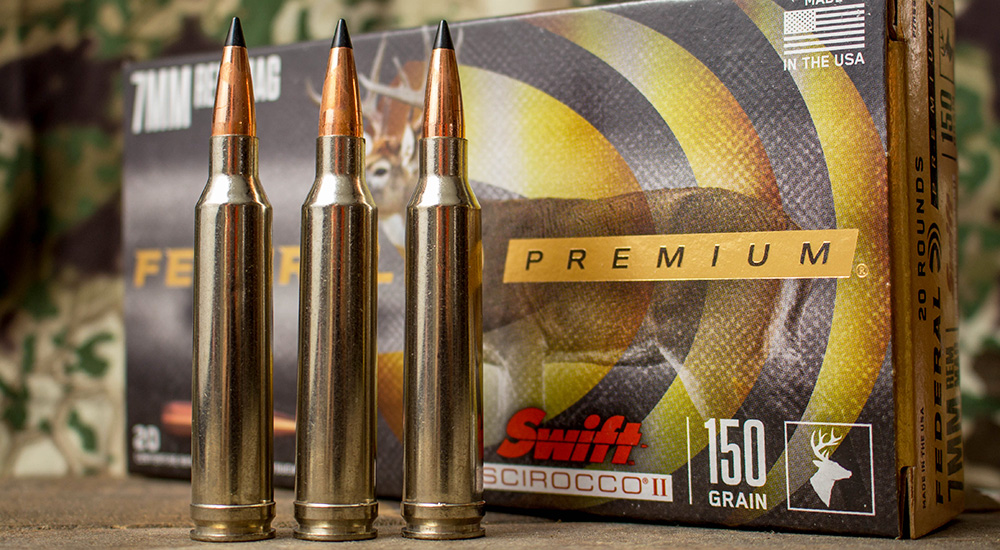
While it has been used to take the huge coastal brown bears, I feel comfortable saying that there might be better tools for that job, and by that I mean a bigger bore diameter and heavier bullets. However, the 7mm Remington Magnum is right there near the top of the list as an all-around choice for the hunter who wants a cartridge for pronghorn antelope, distant Coues deer and Dall sheep, as well as whitetail bucks, bull elk and moose.
Fast forward 60 years and you’ll find Hornady releasing their new 7mm PRC, part of the Precision Rifle Cartridge line. Where the earlier 6.5mm PRC was designed to fit in a short-action receiver, and the beefy .300 PRC needs a magnum-length receiver (though some may argue a long-action will work with some modification), the 7mm PRC sits right in the middle, being completely at home in a long-action receiver. Using the same case-head diameter as the H&H case (0.532 inches), the PRC family has dropped the belt, instead relying on the 30-degree shoulder for headspacing. The case measures 2.280 inches, leaving plenty of room to seat the long, sleek bullets, while maintain that 3.290-inch cartridge overall length.
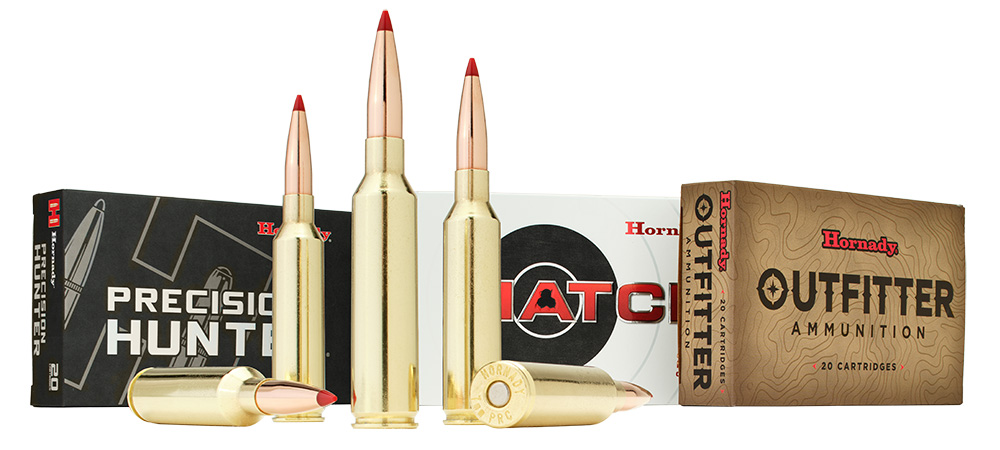
The concept of the shorter case/longer bullet is certainly gaining ground—consider the popularity of the 6.5 Creedmoor over the .260 Remington—and has been applied to the 7mm PRC. Some accuracy hounds insist that the best performance comes from a cartridge which can have its bullet seated so that the base of the projectile does not extend below the junction of the case neck and shoulder; while I cannot refute that, I have seen the 7mm Remington Magnum and .300 Winchester Magnum print some seriously tight groups and consistent velocities, despite their bullets extending was down into to the case.
What I can say based upon my experiences with the 7mm PRC is that it has shown wonderful accuracy. At the time of this writing, there are three loads available from Hornady—the 180-grain ELD Match at 2975 fps, the 175-grain ELD-X at 3000 fps and the 160-grain CX monometal at just over 3000 fps. I took my Wyoming pronghorn twenty minutes after legal light, at 330 yards without issue, and the following week took a black bear boar in British Columbia with the same ELD-X load at 75 yards. The cartridge makes a great choice for the hunter, especially if you like the concept of using your hunting cartridge as a long-range target choice.
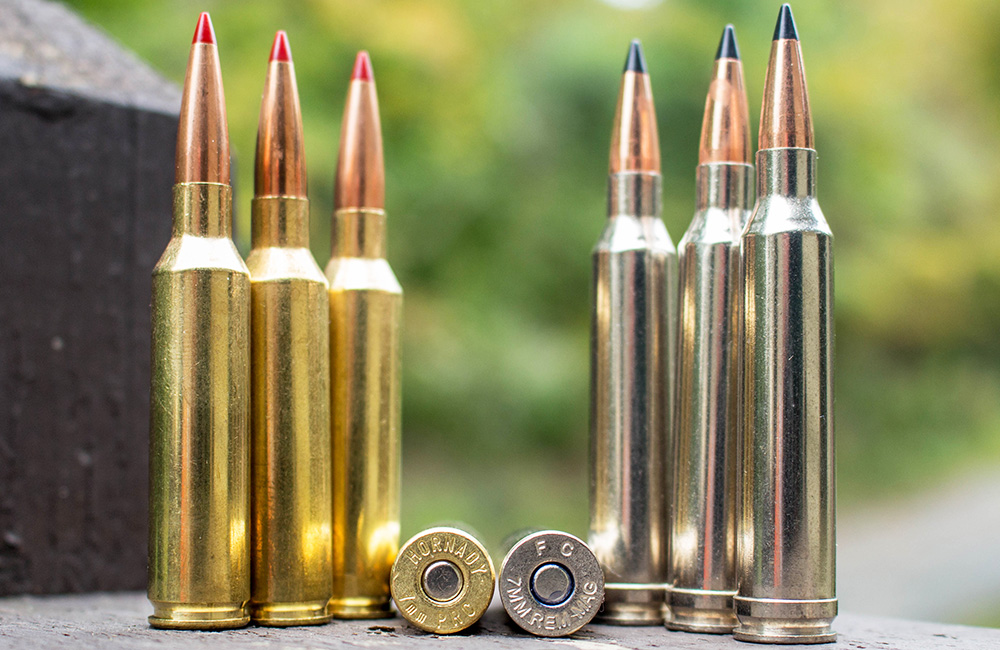
Pitting the two against one another, quite obviously you will find a huge range of ammo selections for the older 7mm Remington Magnum, while the brand-spanking-new 7mm PRC is, for the time being, proprietary. The difference in recoil between the two is negligible, and in a proper fitting rifle is manageable without the need for a muzzle brake or mercury recoil reducer. The 7mm PRC does offer higher velocity figures—running at a higher pressure—though many feel that the 7mm Remington Magnum has plenty of velocity. The PRC is most certainly a better choice as a long-range target cartridge; I had the opportunity to use the cartridge in a Remington Model 700 at the FTW Ranch in Barksdale, Texas, punching steel out to 1,400 yards with repeatable results.
I actually like the 7mm PRC better than I do the 7mm Remington Magnum, for the slightly shorter case, and for the tighter twist rate used in the two rifles I’ve shot (1:8” for the 7mm PRC versus 1:9” or 1:10” for the belted Remington Magnum). Looking at factory ammunition, the PRC should give better concentricity—headspacing off the shoulder rather than the belt—and therefore better accuracy, but those benefits might not be as apparent at common hunting distances.
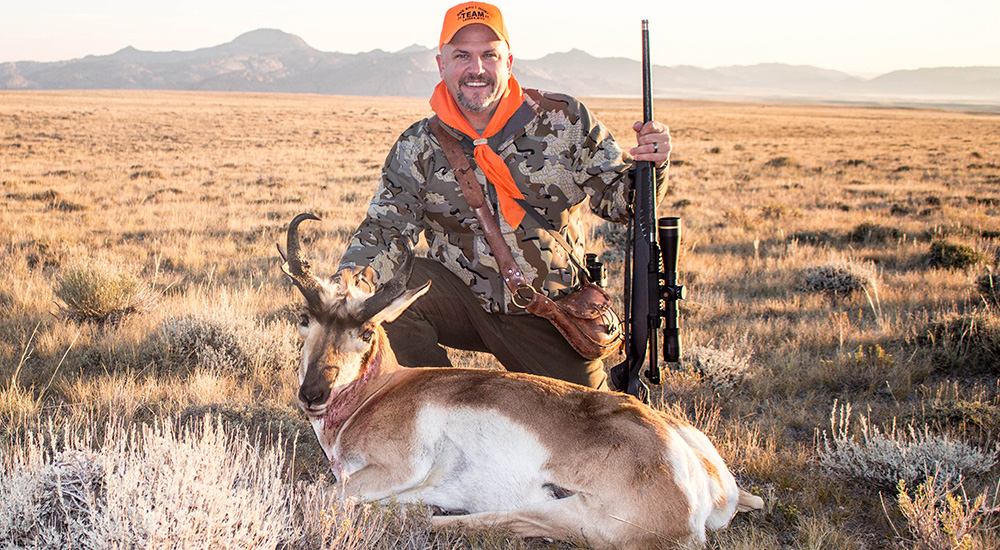
The reloaders will appreciate the longer case life of the beltless PRC case. While only time will tell how the 7mm PRC will be received by the hunting community, and I also doubt many hunters will be selling their 7mm Remington Magnum to replace it with the 7mm PRC, I do feel that new shooters looking for an all-around cartridge in the 7mm bore diameter will take a long, hard look at Hornady’s new design. Of the PRC family, I like the 7mm variant best, and my experiences with it have been nothing but positive, whether I was hunting game animals or steel targets. Just as the .300 Winchester Magnum didn’t quite kill off the .30-06 Springfield, I feel confident saying that the 7mm PRC might not kill off the 7mm Remington Magnum, at least not anytime soon.
There have been a number of “revisionist” cartridges—as I mentioned in the comparison of the .260 Remington and 6.5 Creedmoor—which have offered a shorter case and/or tighter twist rate in order to optimize downrange ballistics, and I feel the 7mm PRC fits this category well. I’ve had some folks state that the belted cartridges of the 20th century are going the way of the dodo, but I don’t believe that to be the case either; few who have relied on the 7mm Remington Magnum, .300 Winchester Magnum or .375 H&H Magnum for decades are going to retire them just because of a belt of brass. However, I’m going to keep an eye on the PRC cartridges over the next few years, and I’ll make this prediction: if ammunition (in both quantity and selection) becomes and remains readily available, these cartridges will rise to the top.
Looking for previous installments of our “Head to Head” series? We’ve got you covered.• 6.8 Western vs. .270 Winchester• .218 Hornet vs. .218 Bee• .338-06 A-Square vs. .35 Whelen• .308 Winchester vs. .300 Winchester Magnum• 6.5 Creedmoor vs. 6.5 PRC• .22 LR vs. .22 WMR• .30-06 Springfield vs. .300 Winchester Magnum• .300 Wby. Mag. vs. 8mm Rem. Mag.• 7mm Remington Magnum vs. 27 Nosler• .257 Roberts vs. .25-06 Remington• .300 H&H Magnum vs. .300 Winchester Magnum• .308 Winchester vs. .338 Federal• .222 Remington vs. .223 Remington• .270 WSM vs. 7mm Rem. Mag.• .22-250 Remington vs. .204 Ruger• .25-06 Remington vs. 6.5 Creedmoor• .444 Marlin vs. .45-70 Government• 7x57mm Mauser vs. .280 Remington• .300 Win. Mag. vs. .300 Wby. Mag.• .375 Ruger vs. .375 H&H Magnum• 7mm-08 Remington vs. .280 Remington• .280 Remington vs. .280 Ackley Improved• 7mm vs. .30 Caliber• 6.5 Weatherby RPM vs. 6.5 PRC• .338 Win. Mag. vs. .340 Wby. Mag.• .300 RSAUM vs. .300 WSM• .500 Jeffrey vs. .505 Gibbs• 7mm RUM vs. .300 RUM• .308 Winchester vs. 7mm-08 Remington• 6.5 Creedmoor vs. .260 Remington• .303 British vs. 8×57 Mauser• .30-06 Springfield vs. All Other .30s• .17 HMR vs. .17 WSM• .450 Nitro Express vs. .470 Nitro Express• 350 Legend vs. .35 Remington• .280 Ackley Improved vs. 7mm Rem. Mag.• .404 Jeffery vs. .416 Rigby• .243 Winchester vs. 6mm Creedmoor• .300 PRC vs. .300 Win. Mag.• .30-06 Springfield vs. .270 Winchester• 6.5 Creedmoor vs. 7mm-08 Remington• 8×57 Mauser vs. .318 Westley Richards• .358 Winchester vs. .350 Remington Magnum• .22-250 Remington vs. .220 Swift• .270 Winchester vs. .270 WSM• .26 Nosler vs. 6.5-300 Weatherby Magnum• .458 Win. Mag. vs. .458 Lott• 7mm Rem. Mag. vs. .300 Win. Mag.• .243 Winchester vs. 6mm Remington• 7x57mm Mauser vs. 7mm-08 Remington• .25-06 Remington vs. .257 Weatherby Magnum• .338 Winchester vs. .375 H&H Magnum• .30-30 Winchester vs. .35 Remington• .257 Roberts vs. .250-3000 Savage• .270 Winchester vs. .280 Remington• .35 Whelen vs. 9.3x62mm Mauser• .416 Rigby vs. .416 Remington Magnum• .308 Winchester vs. .30-06 Springfield• .22 Nosler vs. .224 Valkyrie• .300 Win. Mag. vs. .300 WSM• .223 Remington vs. .22-250 Remington














































